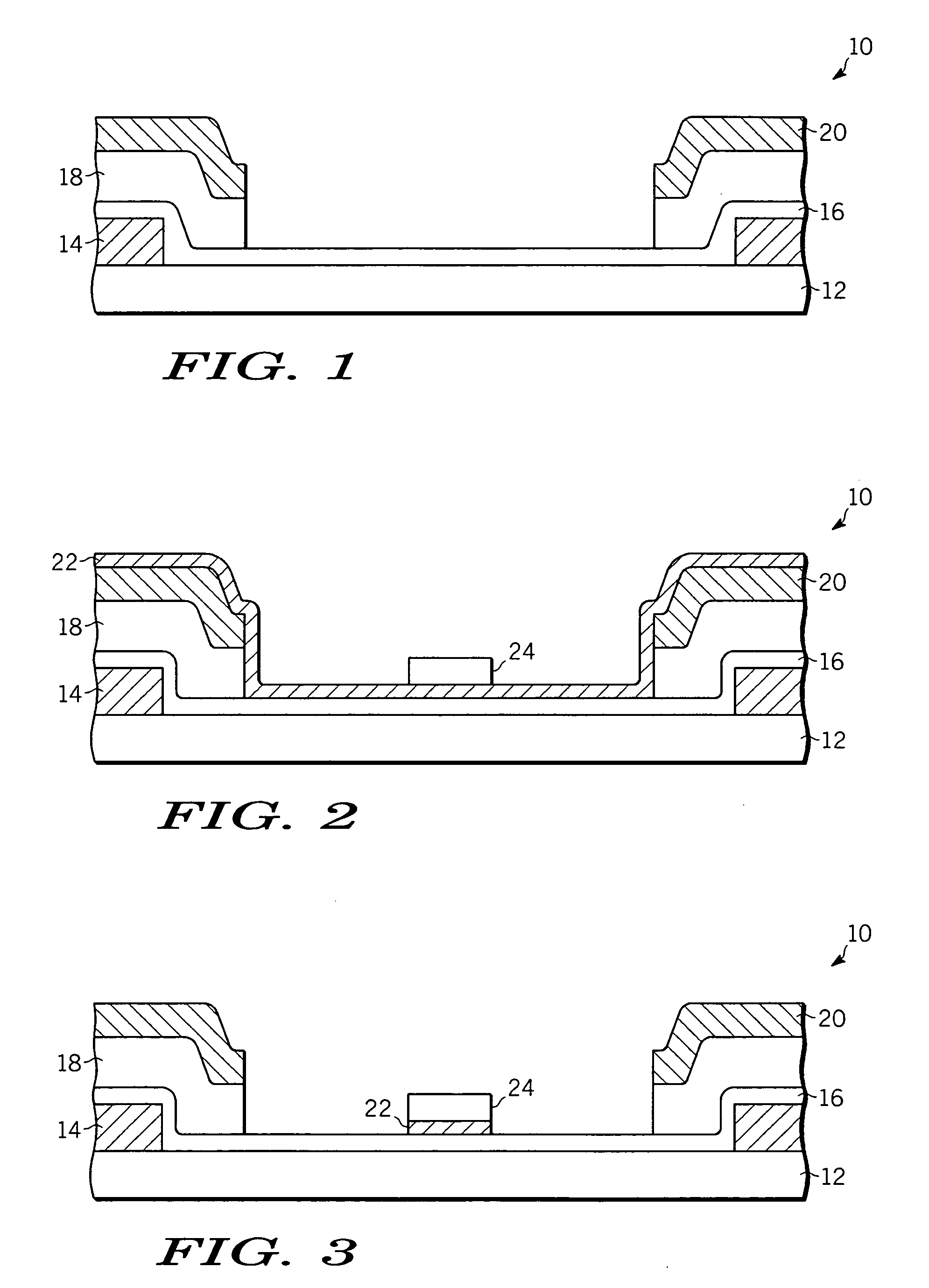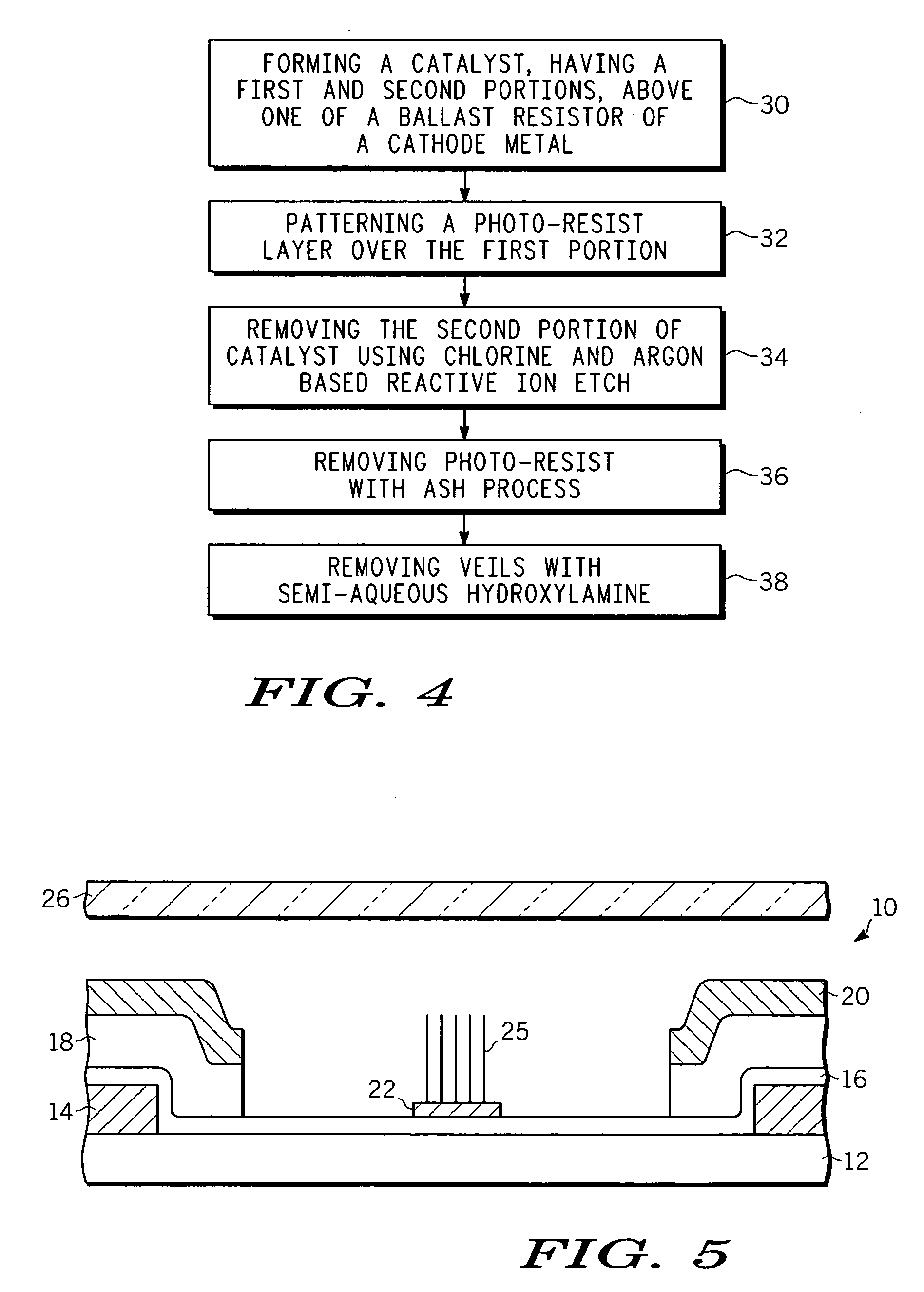Plasma etch process for defining catalyst pads on nanoemissive displays
a nano-emissive display and catalyst technology, applied in the field of catalyst preparation, can solve the problems of limiting the choice of catalyst materials that can be used to promote swnt growth in the cvd process, affecting the patterning of small features, and requiring a large amount of tim
- Summary
- Abstract
- Description
- Claims
- Application Information
AI Technical Summary
Problems solved by technology
Method used
Image
Examples
Embodiment Construction
[0018] The following detailed description of the invention is merely exemplary in nature and is not intended to limit the invention or the application and uses of the invention. Furthermore, there is no intention to be bound by any theory presented in the preceding background of the invention or the following detailed description of the invention.
[0019] A method of patterning a metal catalyst pad using conventional photolithography for growing carbon nanotubes is described. The catalyst metal is plasma etched using a chlorine and argon based reactive ion etch designed to stop on an underlying ballast layer of amorphous silicon, for example. The etchant removes all of the catalyst from the substrate except as masked. The photoresist mask is removed using a multi-step cleaning process to insure the catalyst surface remains in a pristine clean state with no residue remaining which could degrade the catalyst and interfere with nanotube growth.
[0020] Referring to FIG. 1, a previously k...
PUM
 Login to View More
Login to View More Abstract
Description
Claims
Application Information
 Login to View More
Login to View More - R&D
- Intellectual Property
- Life Sciences
- Materials
- Tech Scout
- Unparalleled Data Quality
- Higher Quality Content
- 60% Fewer Hallucinations
Browse by: Latest US Patents, China's latest patents, Technical Efficacy Thesaurus, Application Domain, Technology Topic, Popular Technical Reports.
© 2025 PatSnap. All rights reserved.Legal|Privacy policy|Modern Slavery Act Transparency Statement|Sitemap|About US| Contact US: help@patsnap.com



